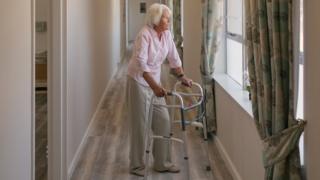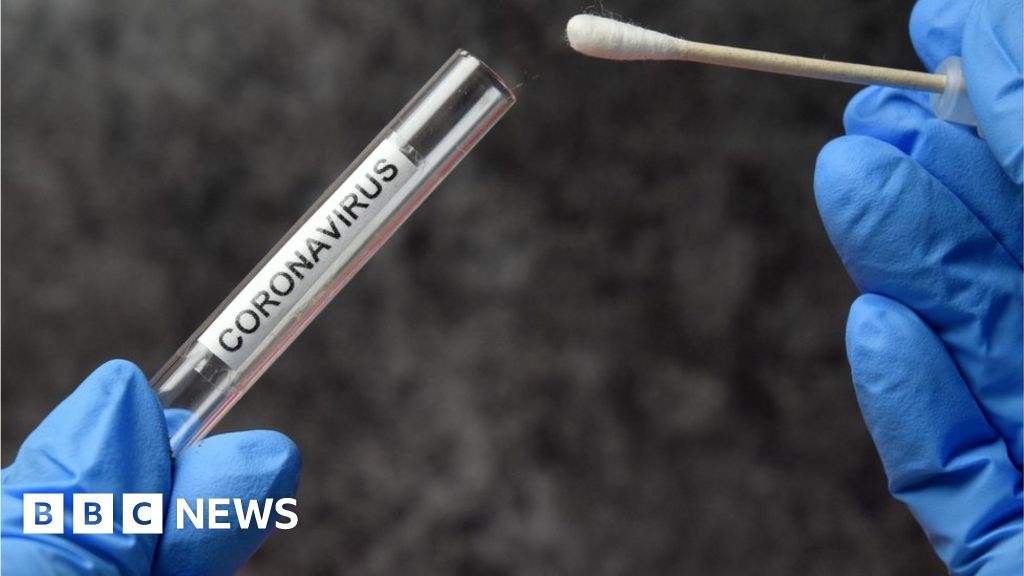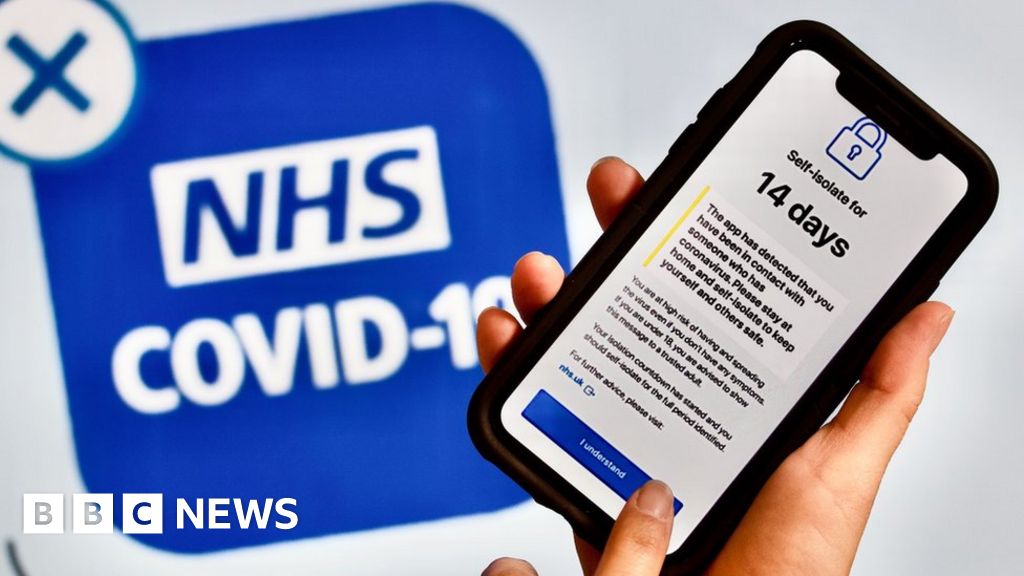 Image copyright
Getty Images
Image copyright
Getty Images
Many thousands of care home residents have died since the start of the coronavirus outbreak.
After criticism from the Labour leader last week, Prime Minister Boris Johnson said: "We brought the lockdown in care homes ahead of the general lockdown."
The wider lockdown was announced on 23 March so when were measures to protect people in care homes introduced?
There are three main routes for the transmission of the virus into care homes - visitors coming to see residents, members of staff and residents being admitted (for instance from hospital).
Visiting care homes
Most care homes in England are privately run, but are regulated by national bodies and would typically act on advice from central as well as local government.
General guidance produced on 25 February included advice for carers on what to do if they came into contact with someone with Covid-19 - but there was nothing advising against visits to care homes.
In one section it said: "It remains very unlikely that people receiving care in a care home or the community will become infected."
Another section said: "Currently there is no evidence of transmission of Covid-19 in the United Kingdom. There is no need to do anything differently in any care setting at present."
However, the government's own Scientific Advisory Group for Emergencies (SAGE) had advised on 10 February that "it is a realistic probability that there is already sustained transmission in the UK, or that it will become established in the coming weeks."
On 3 March, the government released its coronavirus action plan - the document did not mention restricting visits to care homes.
At a briefing the same day, the Chief Medical Officer for England Prof Chris Whitty said on care homes: "One of the things we're keen to avoid is doing things too early, because if you do them early you get no benefit from the epidemic, but what you do get is a social cost."
By 5 March, England had had 273 cases of people with the virus.
That day Prof Whitty told a committee of MPs that as there were cases that could not be traced back to people who had come from abroad, it was "highly likely therefore that there is some level of community transmission in this virus in the UK now".
Italy suspended visits to care homes at this point, five weeks after recording its first case. A day later, Nursing Homes Ireland, which represents hundreds of care homes in Ireland, banned non-essential visits, just six days after the first confirmed case in the country.
On 10 March, Prof Martin Green, head of Care England which represents independent care providers, directed criticism in an Independent article at the government for its response.
At this point in England nearly 800 people had caught the virus, but the article noted that the generic guidance published by Public Health England appeared out of date, as it said there was no evidence of transmission within the UK. Prof Green said: "There is no evidence of a plan. I'm not even certain they have these plans and aren't just making them up as they go along."
Nevertheless, some homes were deciding to close their doors to visitors, with care groups Barchester and HC-One stopping non-essential visits on 10 March and 12 March.
Scottish Care - a representative body for social care in Scotland - advised care homes to close to visits on 11 March.
On 13 March, the government's guidance from 25 February was updated to say that "care home providers are advised to review their visiting policy, by asking no-one to visit who has suspected Covid-19 or is generally unwell, and by emphasising good hand hygiene for visitors".
On the same day Bupa and Four Seasons care homes stopped non-essential visits.
It wasn't until 16 March that it was announced that social distancing should be carried out by everyone, in particular those aged over 70 and vulnerable people.
That day, the prime minister was asked about care homes and said: "We don't want to see people unnecessarily visiting care homes." By this point there had been 3,200 cases in England (although the figure given by the authorities at that point was less than half of that; positive cases are now dated to the day the sample was given).
In the period between 25 February and 16 March, 14 deaths of care home residents were reported along with 30 outbreaks in England's 15,000 care homes.
On 21 March, guidance was introduced to encourage medically vulnerable people to remain indoors as much as possible until the end of June - a process known as shielding.
On 24 March, when the lockdown began, people were not supposed to leave their homes at all except for "essential" reasons, which didn't include visits to care homes.
Finally, on 2 April another document from the Department of Health and Social Care said that "family and friends should be advised not to visit care homes, except next of kin in exceptional situations such as end of life".
Speaking on 15 May, Health Secretary Matt Hancock said that on the basis of the 13 March guidance "many of the care home providers, for instance Care UK, at that point stopped visitors".
Moving patients from hospitals to care homes
On 19 March, NHS guidance said that "unless required to be in hospital, patients must not remain in an NHS bed".
This policy was implemented to free up beds in advance of an expected surge in coronavirus patients.
On 2 April, the rules on discharging to care homes were clarified, saying "negative [coronavirus] tests are not required prior to transfers/admissions into the care home".
Even elderly hospital patients who had tested positive could be admitted to care homes, according to the document, if measures - such as use of personal protective equipment (PPE) and isolation - were used.
From 15 April, the government said that all patients discharged from hospitals would be tested for coronavirus. By this time, more than 5,700 residents in England and Wales had died either in their care home or in hospital.
There are no statistics to show how many cases of coronavirus were transmitted from hospitals to care homes.
Chris Hopson, the head of hospital representative body NHS Providers, said it was "categorically not true" that hospitals were systematically discharging patients to care homes with coronavirus, saying there had been a 40% drop in the number of discharges compared with January.
He added that because "sufficient testing" didn't come in until mid-April: "It is possible that a very small number of asymptomatic Covid-19 patients [people who had coronavirus but weren't showing symptoms], who trusts were unable to test prior to that date, were discharged to social care."
Image copyright Getty ImagesCabinet Office minister Michael Gove was asked by Andrew Marr on 17 May about the government's guidance on moving patients from hospitals to care homes. He said: "The decision about whether a patient is in a hospital or in another setting, a care home or home, is a clinical decision."
Mr Gove acknowledged that government advice had altered over time, "as a result of our scientific knowledge of the virus changing".
A Department of Health and Social Care spokesperson said: "We have followed a science-led action plan designed at all times to save lives. This week we announced a new £600m infection control fund for care homes... on top of the £3.2 billion we made available in March and April."
Additional reporting by Heather Sharp.

 5 years ago
824
5 years ago
824 

